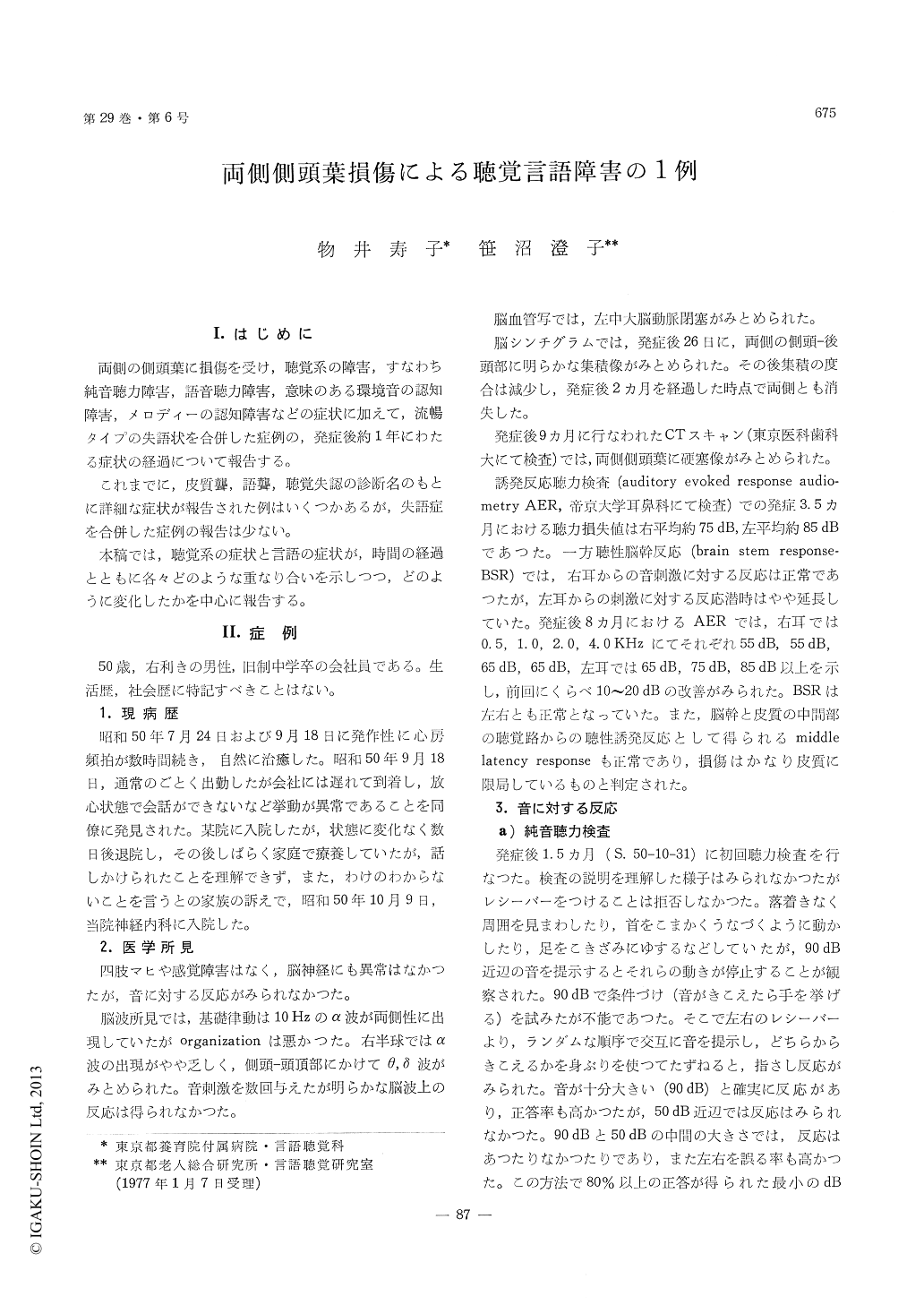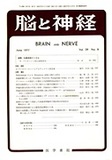Japanese
English
- 有料閲覧
- Abstract 文献概要
- 1ページ目 Look Inside
I.はじめに
両側の側頭葉に損傷を受け,聴覚系の障害,すなわち純音聴力障害,語音聴力障害,意味のある環境音の認知障害,メロディーの認知障害などの症状に加えて,流暢タイプの失語状を合併した症例の,発症後約1年にわたる症状の経過について報告する。
これまでに,皮質聾,語聾,聴覚失認の診断名のもとに詳細な症状が報告された例はいくつかあるが,失語症を合併した症例の報告は少ない。
The communication impairment of a 50-year-oldright-handed man, with radiologically confirmedbilateral temporal lesions due to a cerebrovascularaccident, was closely followed for a year starting1.5 months after the onset. The major findingswere :
1. For the initial two months, the patient showedsevere bilateral hearing loss and behaved essentiallyas if deaf.
2. By the end of three months after the onset,however, an almost complete recovery from thehearing loss took place, but then it was become ap-parent that he could neither identify speech soundsnor recognize the meanings of environmental sounds,i.e., dogs' barks and telephone rings. He could notidentify the melodies of popular songs, either.
3. At seven months after the onset, his abilityto identify speech sounds increased somewhat (thespeech intelligibility score of 55% for the rightear and 40% for the left ear), and his impairmentof recognizing environmental sounds improved also(61% correct responses), but no improvement wasobserved for tne recognition of melodies. For thefollowing six months no remarkable change wasobserved for any of these abilities.
4. His aphasic symptomatology for the initialtwo months was characterized by fluent articulation,word finding difficulties, a great amount of literaland verbal paraphasias both in speech and in writ-ing, and a total inability of auditory comprehension.
5. In parallel with the recovery of auditoryperception of both pure-tones and speech sounds,however, auditory comprehension of words andsentences also improved. At seven months afterthe onset, the patient was able to follow simpleconversation and to communicate in simple, shortphrases and sentences interspersed with occasionalparaphasias. On the other hand, he could notrecognize the prosodic features of spoken sentencesnor melodies.
6. After six months onward, the pattern of hisaphasic impairment has remained essetially un-changed except that his word finding difficulty hasshown some improvement.
The relative contibution of aphasic and auditorydisorders to the overall pattern of his impairmentas well as its change over time were examined andcompared with similar cases reported in the liter-ature. Implications of these findings to the termi-nological confusions were discussed.

Copyright © 1977, Igaku-Shoin Ltd. All rights reserved.


